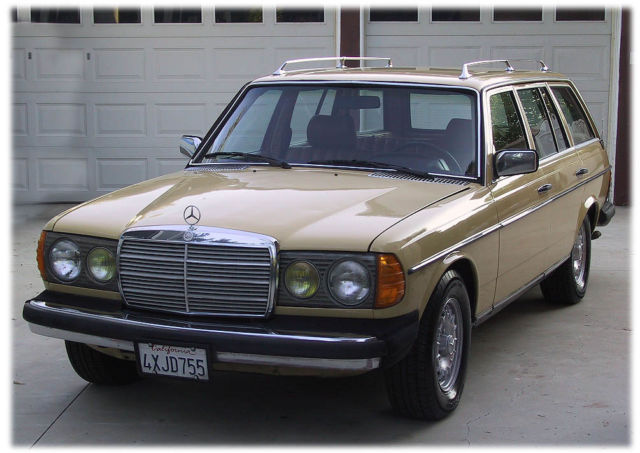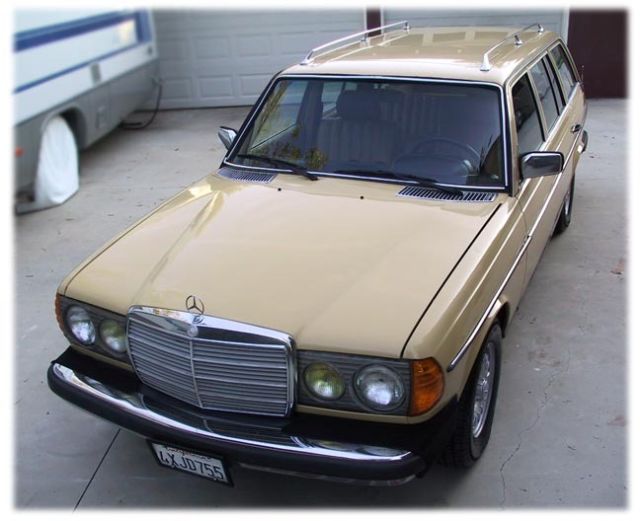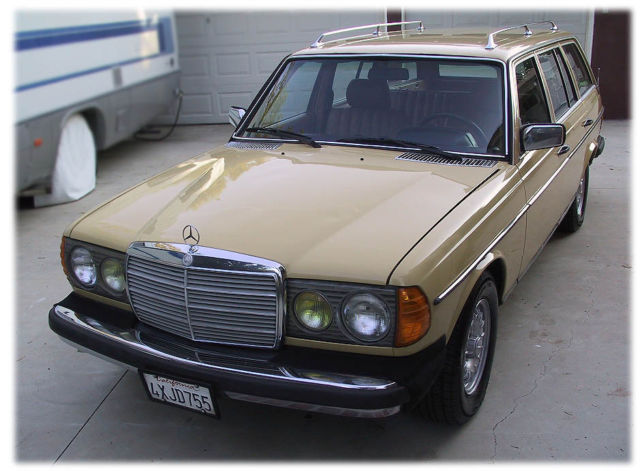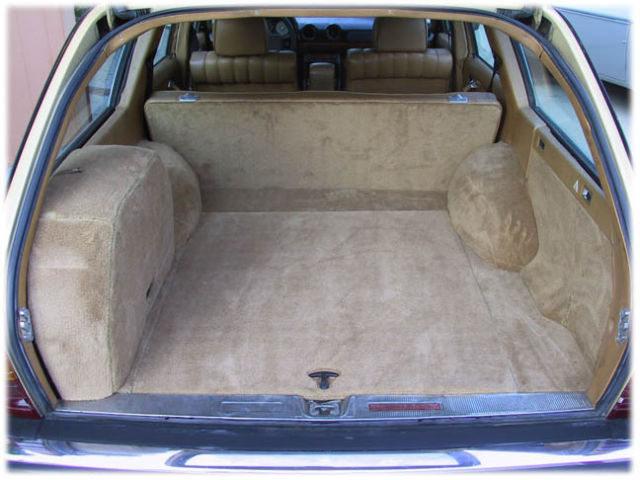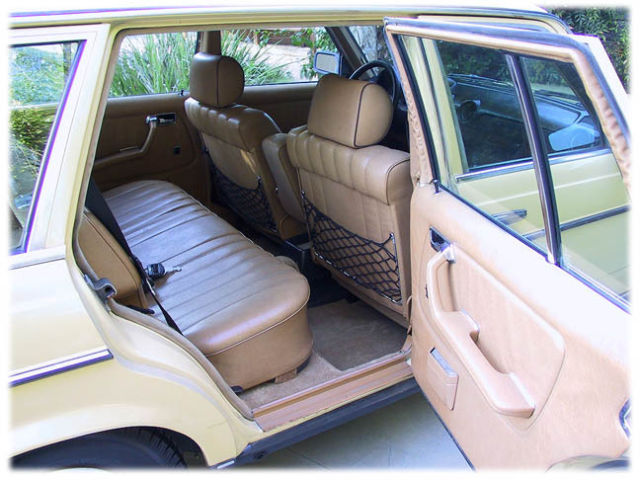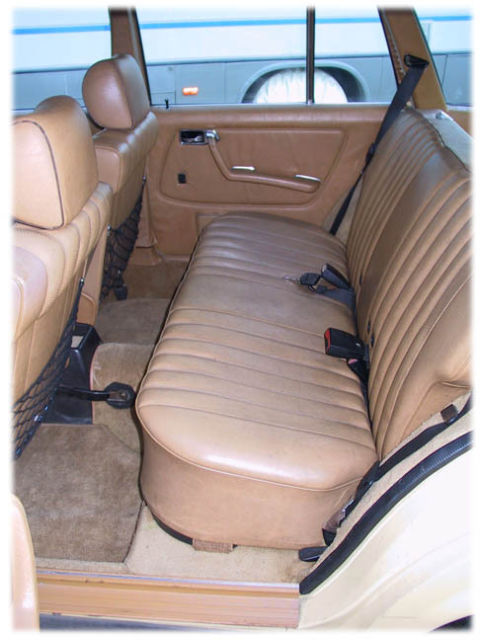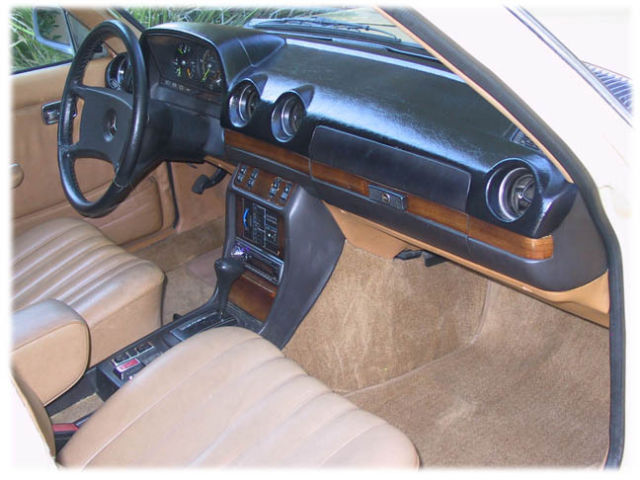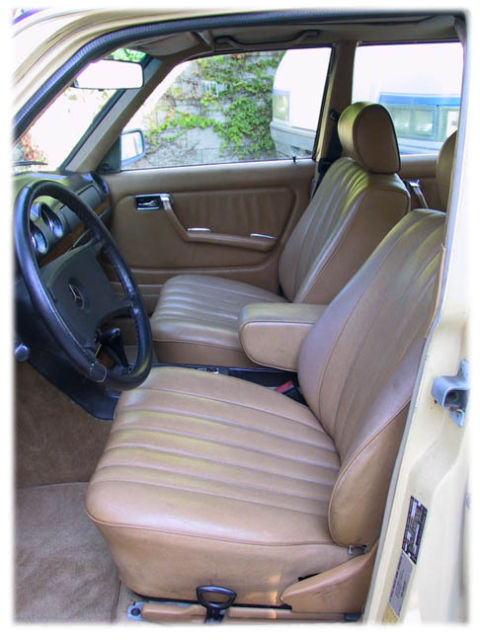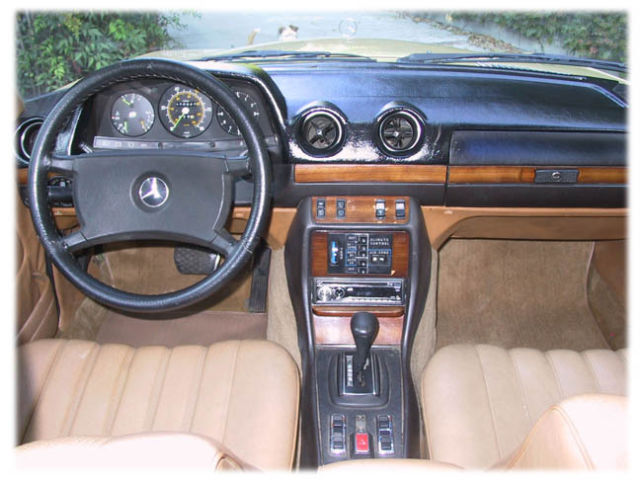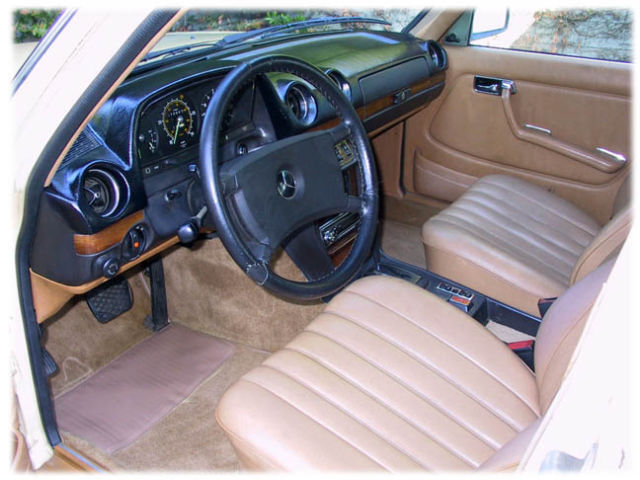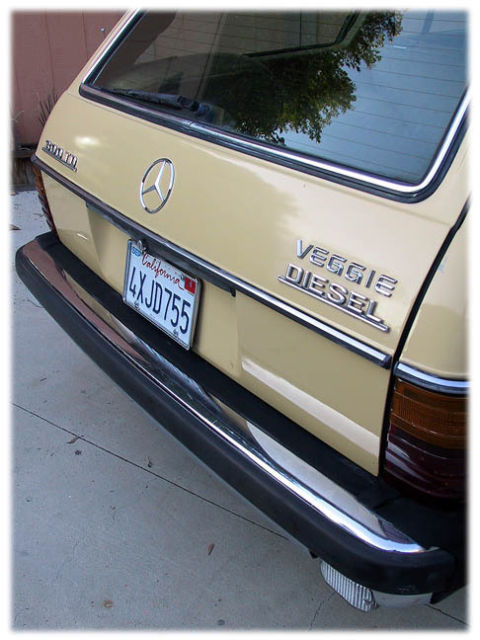1980 Mercedes-Benz 300TD W123 wagon converted to run WVO, Biodiesel or Diesel
1980 Mercedes-Benz 300-Series 300TD
Mercedes-Benz 300-Series 1980 technical specifications | |
|---|---|
| Condition: | Used |
| Item location: | Nipomo, California, United States |
| Make: | Mercedes-Benz |
| Model: | 300-Series |
| SubModel: | 300TD |
| Type: | Wagon |
| Trim: | 5 door station wagon W123 300TD |
| Year: | 1980 |
| Mileage: | 183,641 |
| VIN: | WBD19012017641 |
| Color: | Ivory to Cream |
| Engine size: | 5 cylinder 3 liter feul-injected diesel |
| Number of cylinders: | 5 |
| Power options: | Power Locks, Power Windows |
| Fuel: | WVO, Biodiesel, or Diesel |
| Transmission: | Automatic |
| Drive type: | Automatic |
| Interior color: | Palomino color leather interior |
| Options: | CD Player, Leather Seats, Sunroof |
| Vehicle Title: | Clear |
| You are interested? | Contact the seller! |
Description |
|---|
1980 Mercedes 300TD Wagon W123 engine - ONLY 183,641 miles
Probably one, f not the best, iesel car engines ever made (W123). This model has been known to do well over 1 million miles. For the 300TD the "T" was for touring and the "D" denoted a diesel motor. These W123 engines are also considered the best choice for converting to VO or biodiesel because they have mechanical fuel injection pumps that are built like Abrams tanks !! On a side note, his is the same make and model that John Lennon drove around New York. When new, hese had a long waiting list to purchase.
This vehicle has a sun roof, eather seats, ower assisted brakes, ower steering, M/FM/CD/AUX stereo, og lights, ower windows and doorlocks.
183,641 miles and recently converted to run on Vegetable Oil (VO), iodiesel or diesel
The vehicle comes with WVO (Waste Vegetable Oil) filtration system and approximately 250 gallons of WVO in 5 gallon cubes.
The car is in great running condition and will run on WVO, iodiesel, r Diesel.
I put a lot of work into this car. It is going to be difficult to see it go. This was my project car and I spent roughly hundreds of hours fixing the car and upgrading the WVO system to work in such a way that WVO would run well in the engine. I bought it because I used to own a restaurant and I needed to dispose of used fryer oil every week. Gas was over $4 gallon and I had all the free fuel (WVO) that I could use. I have since sold the restaurant and I don’t have much time on my hands with my new job. The wife wants to get it out of the garage, o it has got to go!!
This would be a great car for someone looking to get into WVO, ecause I have done all the conversion work to get this car safely running on WVO or biodiesel. The new owner could just improve the vehicle with a few small fixes. See below for my recommendations.
It had 170,000 miles when I got it. I used it to commute and carry surfboards on the weekends. The engine has good compression in all 5 cylinders and the auto transmission is smooth.
The wagon currently has surf-racks on it. Those can be removed if you don’t like them. They cost $150 new.
In fair disclosure, ere are all the things that are wrong with the vehicle and these are not much considering the car’s age. The fuel gauge has stopped working (I just note the mileage on the odometer and do the math to know when to fill up again). The air conditioning does not blow cold, never got around to fixing that. It drips just a little bit of oil, ot bad, ust weeping enough to put a couple drips where it is parked (put cardboard down). The power door locks hold vaccum, ut for only about 8 hours while sitting with engine off, ut no big deal, ou can always unlock the driver side door manually and unlock the other doors from inside. Once the engine fires up, he vaccum system is restored and the door locks work fine. The rear left door window goes down but not back up. This is only a problem with the switch, nd can be fixed easy with a new switch. The turn signals flash rather fast, ot a problem, ust needs a new flasher relay or live with it.
I recommend the new owner do the following, f possible but not necessary: If you can get a partitioned fuel tank installed that holds both diesel and WVO, ou can carry around more diesel (the 1.5 gallon diesel tank is just a little too small. In the process you could fix the fuel gage (it is not really the gauge that is the problem, t is the old sender float in the main tank).
New front suspension. I spent $1800 on professionally rebuilding the front suspension. In addition to this, personally installed a new vacuum pump, ew power steering pump, ew water pump, ew alternator brushes, ew glow plugs, ew battery, ew ground cable, eplaced a few brake pads, nd MANY MANY other small fixes here and there.
The carpeting was replaced throughout and is very clean. The upholstery is all in good shape. The dash board is in mint condition and has zero cracks.
The car was always stored in the garage by both me and the former owner. This is a good looking wagon.
The body does have a couple very very small pressure dings and 3-4 very small paint scratches, ut nothing noticeable. There is no rust. That is probably the reason why I think it is worth a little more.
Tires are very new and have lots of good tread.
Disclosure: this is the non-turbo model that is known to be a bit sluggish on acceleration. Turbo can be installed, ll of the proper connections are there.
Conversion:
So the way this 2 tank WVO system works, ncase you know nothing about veggie diesels, s waste vegetable oil is obtained from restaurants for free. This is not necessary, he vehicle runs on diesel and biodiesel too, ut if you want to run on WVO, t is filtered outside of the car (a filtration system comes as part of the sale here). The filtered Veg oil is pumped in to the main tank of the car. The engine is started on regular diesel from a separate tank and once up to temp (only takes a few miles) the oil has been heated to a perfect 165 deg F, ou flip a few switches and voila !! You are running on vegetable oil with no change in power or performance. Just before you reach your destination, ou switch it back to regular diesel to keep the fuel injectors clear for the next time you cold start the vehicle.
You will be surprised at how well the car runs on VO. It is completely un-noticeable, n fact runs better on VO.
Here are the conversion items installed in this vehicle (in order of the fuel system):
WVO filtration cart: used outside of the car, his is a three stage air pressure powered WVO filter system. You will need an air compressor to operate the external WVO filtration system. If you don’t have one, o down to Harbor Freight and by a cheap pancake compressor for like $45. I am supplying a marine utility pump to suck the WVO out of the cube containers without sucking the sediment on the bottom. The first part of the system heats the oil with an electric water heater to about 120 deg F, hen air pressure pushes the oil through a three stage filter that gets the oil filtered down to 5 microns and pushes the oil into the car’s main fuel tank.
Electric fuel booster pump: Inside the car, his pump draws the WVO up from the main fuel tank and circulates the WVO through a small filter, o the Lovecraft system, nd to the engine and most goes back to the tank warming the oil in the main tank.
Lovecraft biofuels System: This is a good system BUT NOT ALONE, t works better with the two tanks and the other equipment I installed get the oil up to 165 deg F. That is why I modified the whole fuel system by adding a second diesel tank and three additional electronic fuel heaters. The Lovecraft system heats the WVO with hot water from the radiator. It has a heated fuel filter (I put in a new high quality Goldenrod BiO-FLO filter in it) and a second counter flow fuel heater.
PlantDrive Vegtherm feul heater with circuit breaker: Next the WVO enters a 250-watt electric Vegtherm fuel heater and then goes to the injection pump. If the fuel flow ever stalls in this system it will automatically shut off before overheating the feul.
Fattywagons injection line heater: At top of the injection pump and at the base of the fuel injection lines I have installed a 100 watt Fattywagons electric fuel heater. This heats the WVO even more before it enters the injection lines
Injection line Heat Trace cables and insulation: Most veggie cars lose fuel heat to the cold, xposed, etal injection lines. This is bad, ecause those lines are the last path before fuel is injected in to the engine. I have solved this problem with installing self-regulating low-voltage (50 watt) heat trace cables. The heat cables hug each injection line and then both line and cable are insulated with pipe foam. The result is a perfect 165 degree fuel injection line measured with an instant read thermometer just above the injectors. These heat cables can also be used to keep the injection lines warm while you are stopping to go to the grocery store or pre-heat the lines on cold mornings before you go to work, ithout draining the battery.
An alternate second 1.5 gallon diesel tank: I installed this, n the engine compartment for cold starting and shutting down (the main fuel tank is used for VWO, iodiesel, r regular diesel). Having a two tank system is important to keep only fresh regular diesel sitting in the fuel system when the engine is cold.
Two Electronic fuel diversion solenoid valves: These operate the flow of fuel to and from the diesel tank and main fuel tank. I used high quality electronic valves with non-corrosive metal.
Circuit connection box and fuse line: Each of the many electronic systems installed for the WVO conversion are on separate circuits and each have a fuse neatly lined up and easy to replace. All the circuit connections are neatly tucked in to a small utility box and fire proof. Everything is safe and up to CA vehicle code.
5 switch control panel installed in the ashtray: I neatly installed the control system in the hardwood ashtray. This make the car almost James Bond like !! Disclosure: a few of the lighted switches no longer light up, ut the switches all work just fine. I’ll give you instructions on how to switch between diesel and WVO.
2 fuel temperature sensors with gauges installed on the dash. One sensor is installed on the fuel supply line just after the VegTherm heater, he other sensor is on the injection lines. These never seemed to work very well. The needle just comes off the bottom line of the gauge when the car is warmed up, ut usually gives a lower than accurate reading. Eventually they read 165 once the car has been running for an hour. An instant read thermometer at the injection line reads 165 after 10 minutes from a cold start and I confirmed the fuel temp once by measuring the fuel temperature by removing a fuel injector line.
Fluoroelastomer fuel lines: The whole fuel system was upgraded wih fluoroelastomer fuel lines. This is a special purpose fluorocarbon-based synthetic rubber fuel line that will not oxidize when exposed to WVO, iodiesel or petrodiesel. It has wide chemical resistance and superior performance, specially in high temperature application. SUPER IMPORTANT FOR WVO CARS !!
Of course the whole WVO system can be turned off, nd you can run the car on diesel or biodiesel from the main and auxiliary fuel tanks too.
Here are the extra items that come with the car:
Original owner’s manual
Both the Chilton and Haynes repair manuals
WVO filtration system.
New Spare Bosch manual fuel pump
New Goldenrod bio diesel veg fuel filter
2 transmission service packs including filters and gaskets
2 spare windshield wipers
3 New brake pads
spare glow plugs
extra fluoroelastomer fuel line
original cruise control equipment - not working
New spare belt
New spare thermostat and gasket
Good spare tire on full size rim
New extra bulbs for brake lights and turn signals
250 gallons of WVO
THE SALE OF THE VEHICLE IS FINAL AND NO RETURNS, WILL ACCEPT PAYPAL, ASH OR BANK CASHIERS CHECK. I WILL NOT DELIVER THE VEHICLE, UT YOU MAY HAVE A DELIVERY SERVICE PICK IT UP AT YOUR CHARGE.
